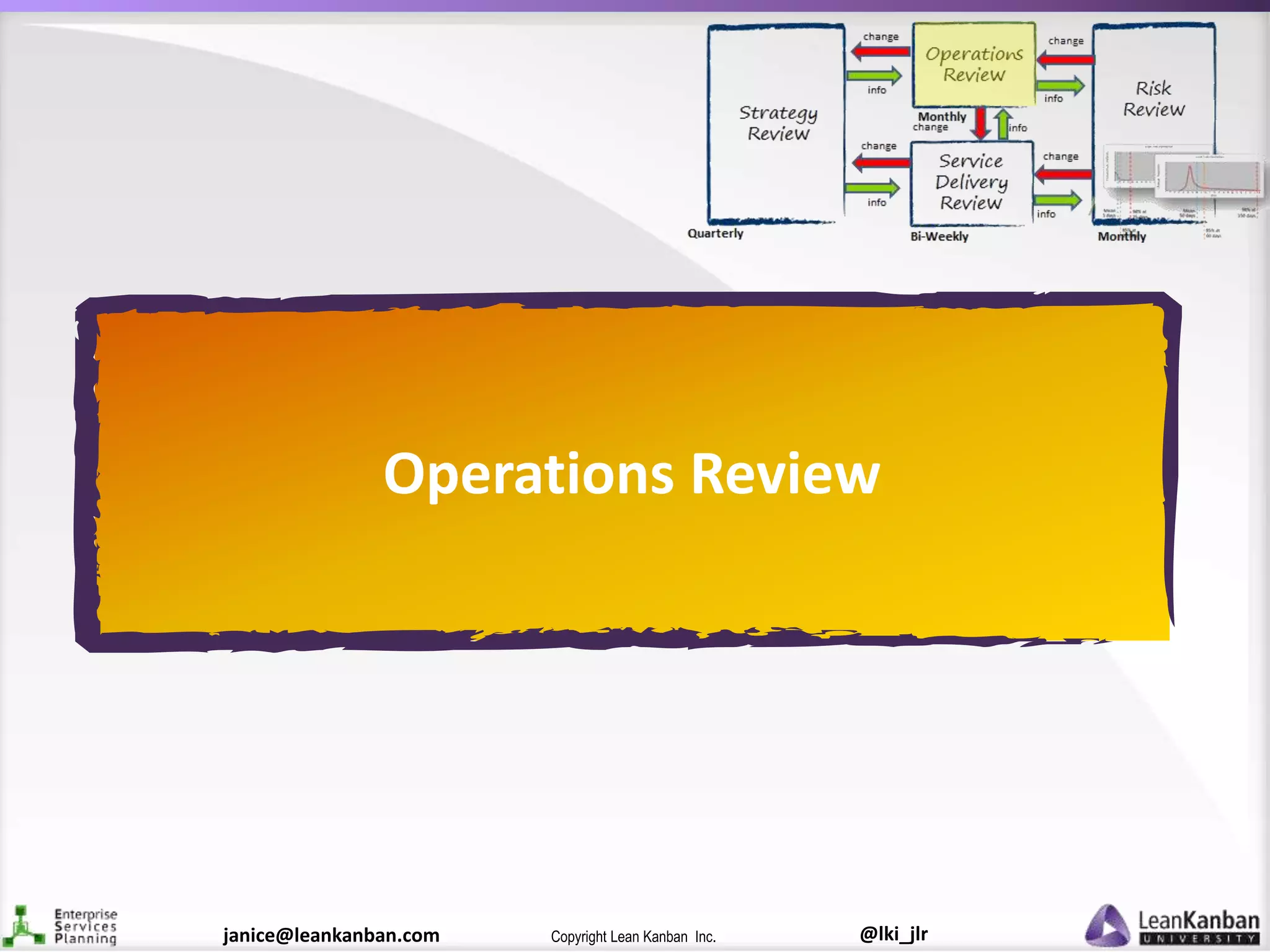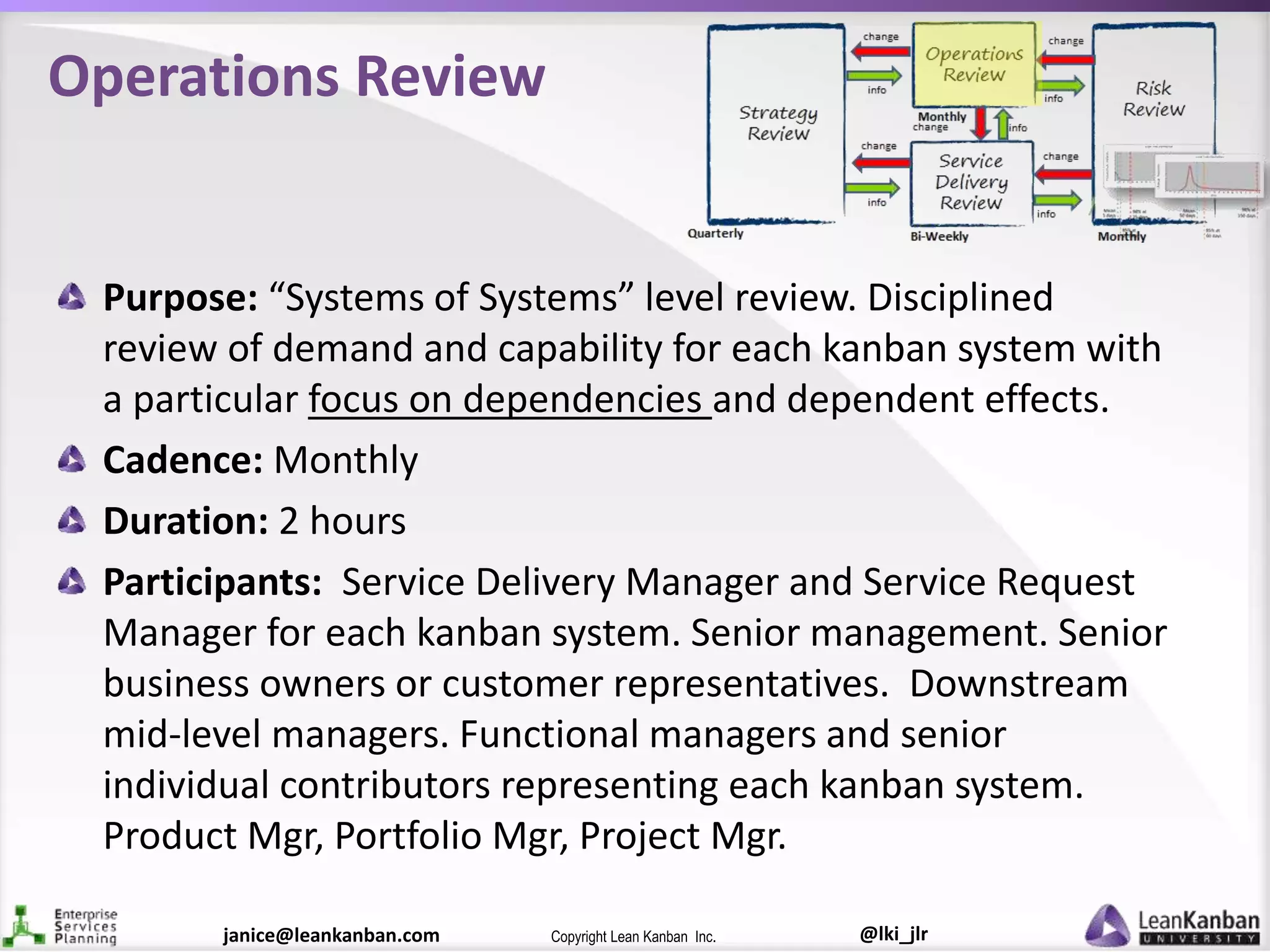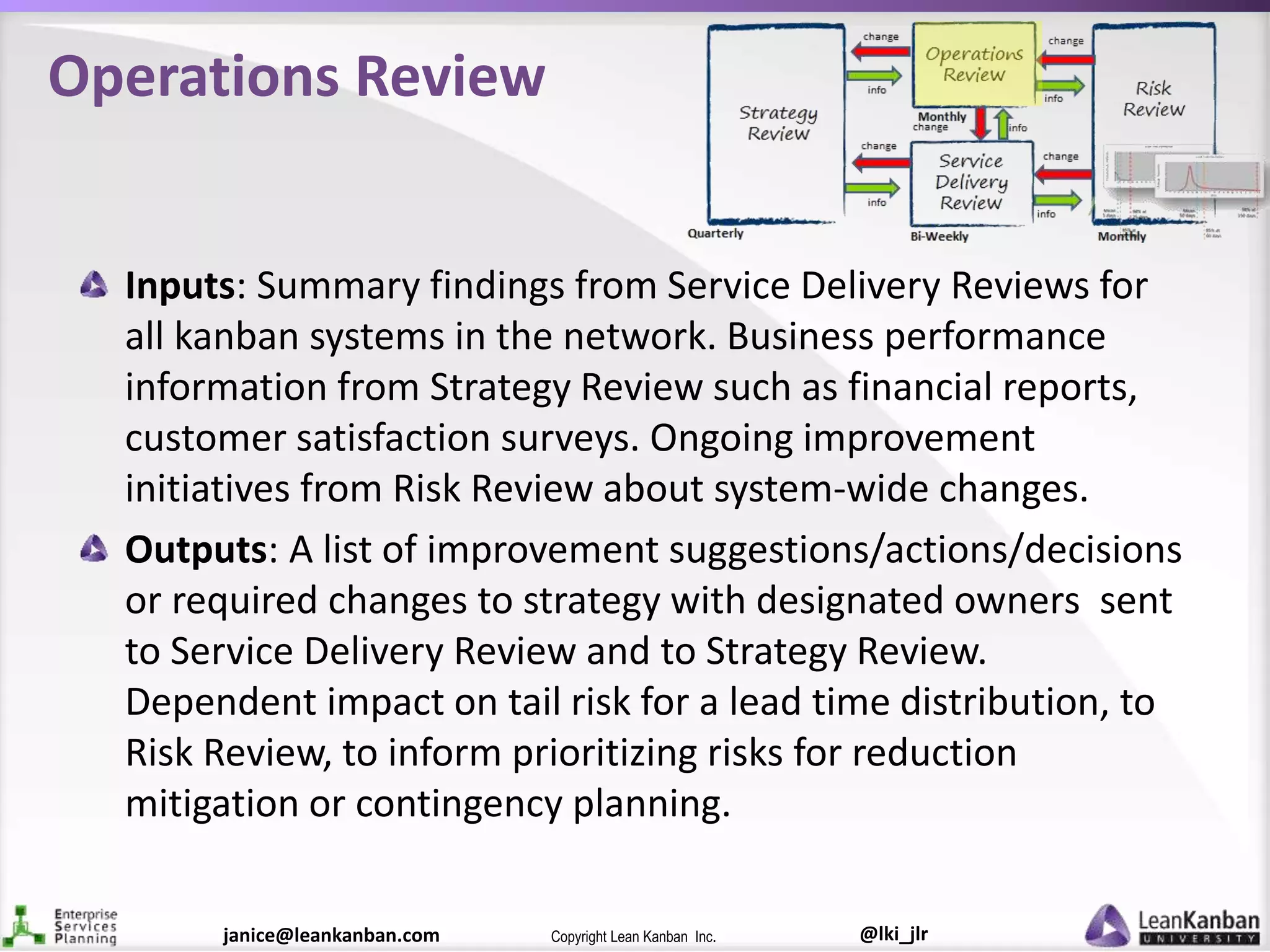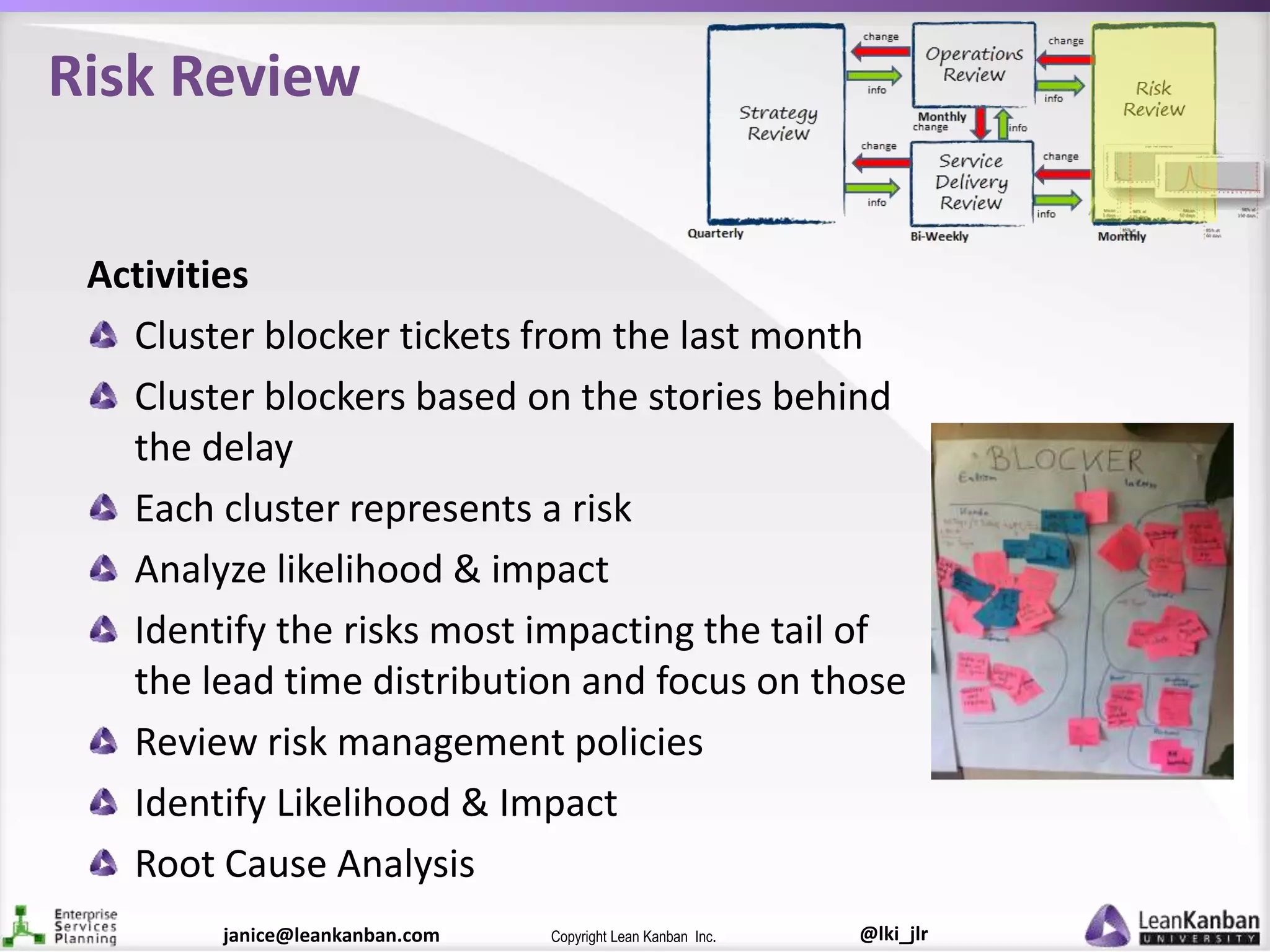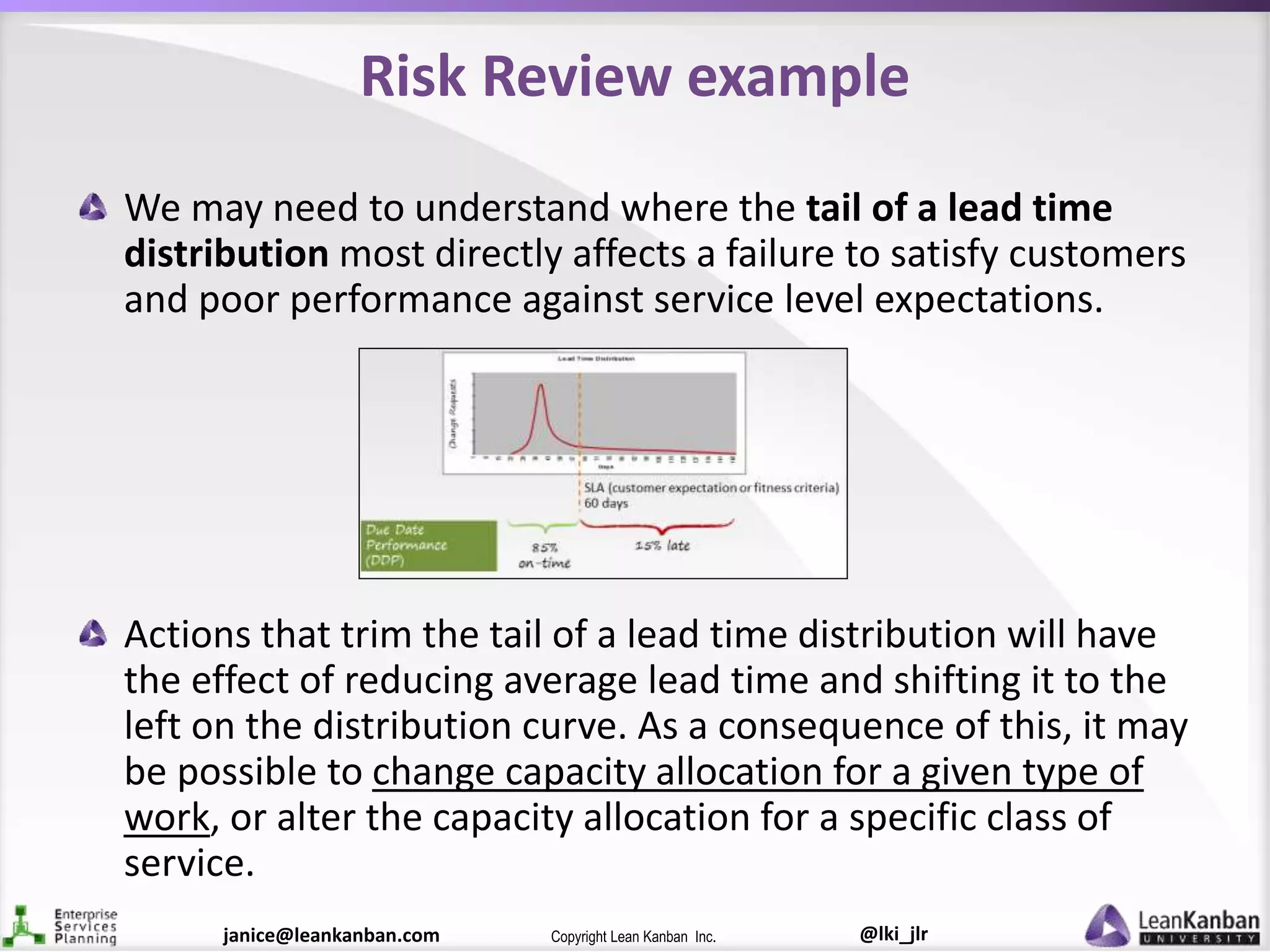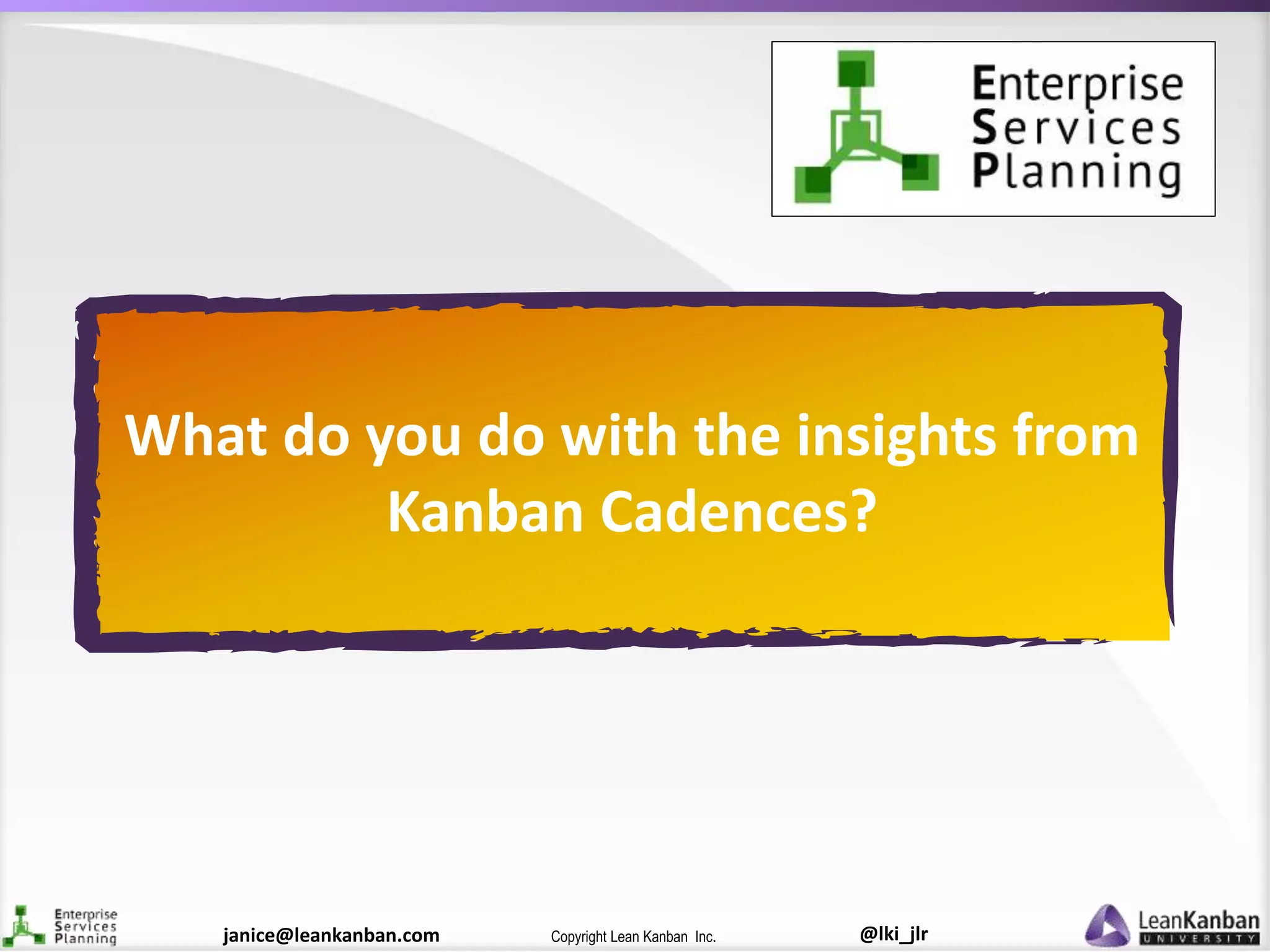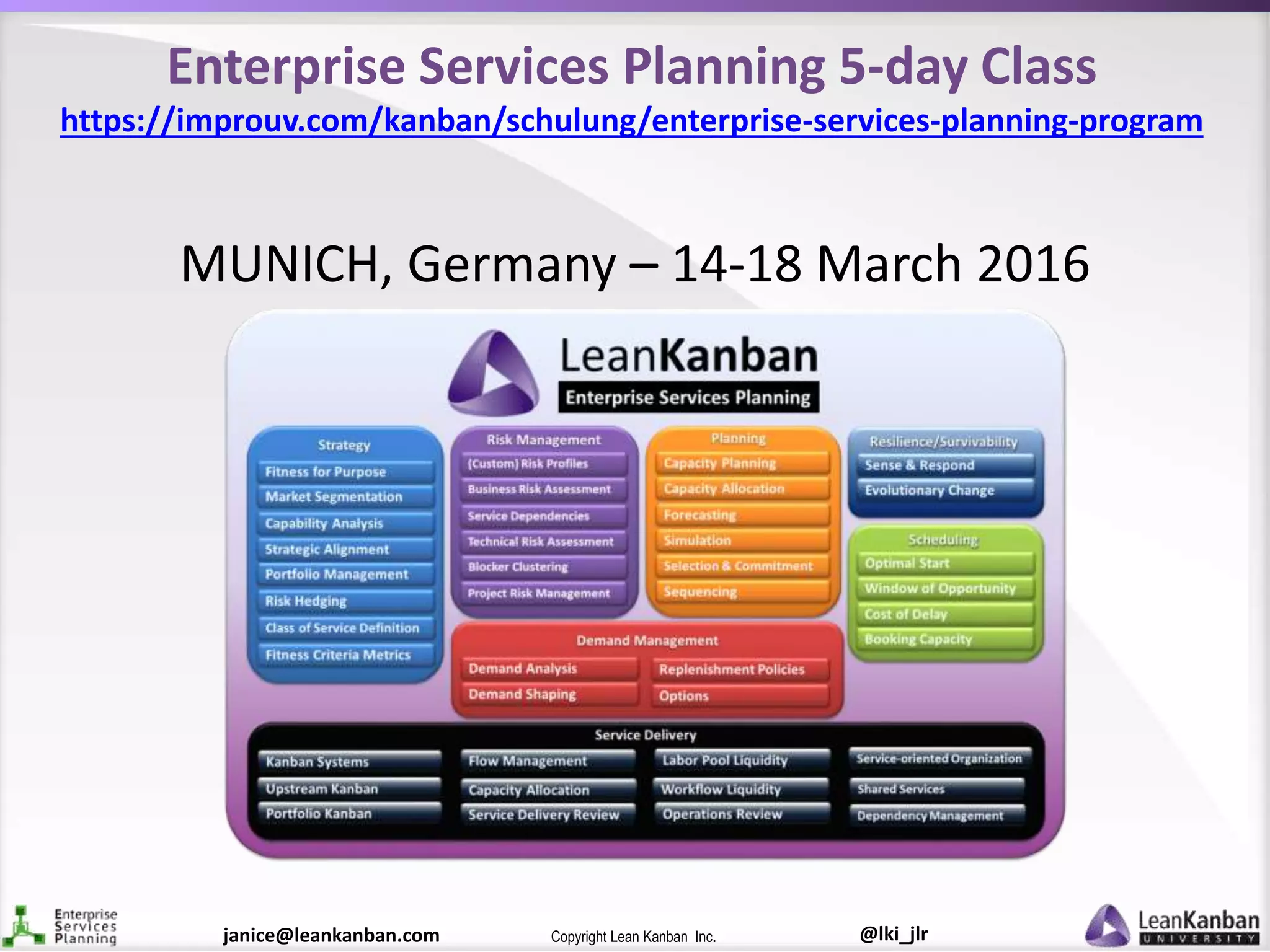The document outlines the principles and practices of Kanban as a management system aimed at improving service delivery through structured cadences and feedback loops. It details various meetings such as replenishment, delivery planning, and service delivery reviews, each with specified purposes and activities to enhance communication and decision-making within teams. Additionally, it emphasizes the importance of adjusting strategies based on customer feedback and performance metrics to ensure alignment with business goals.

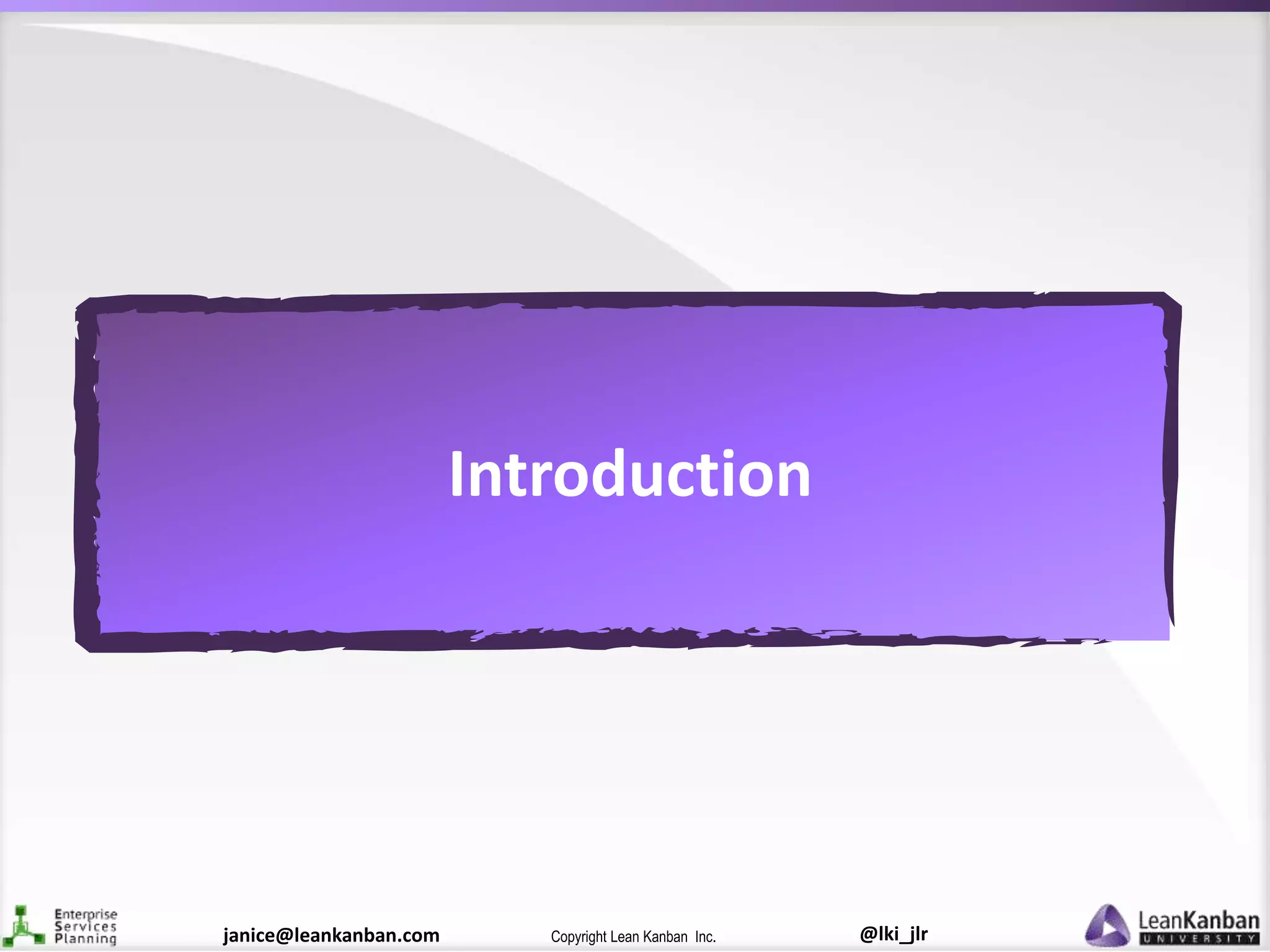







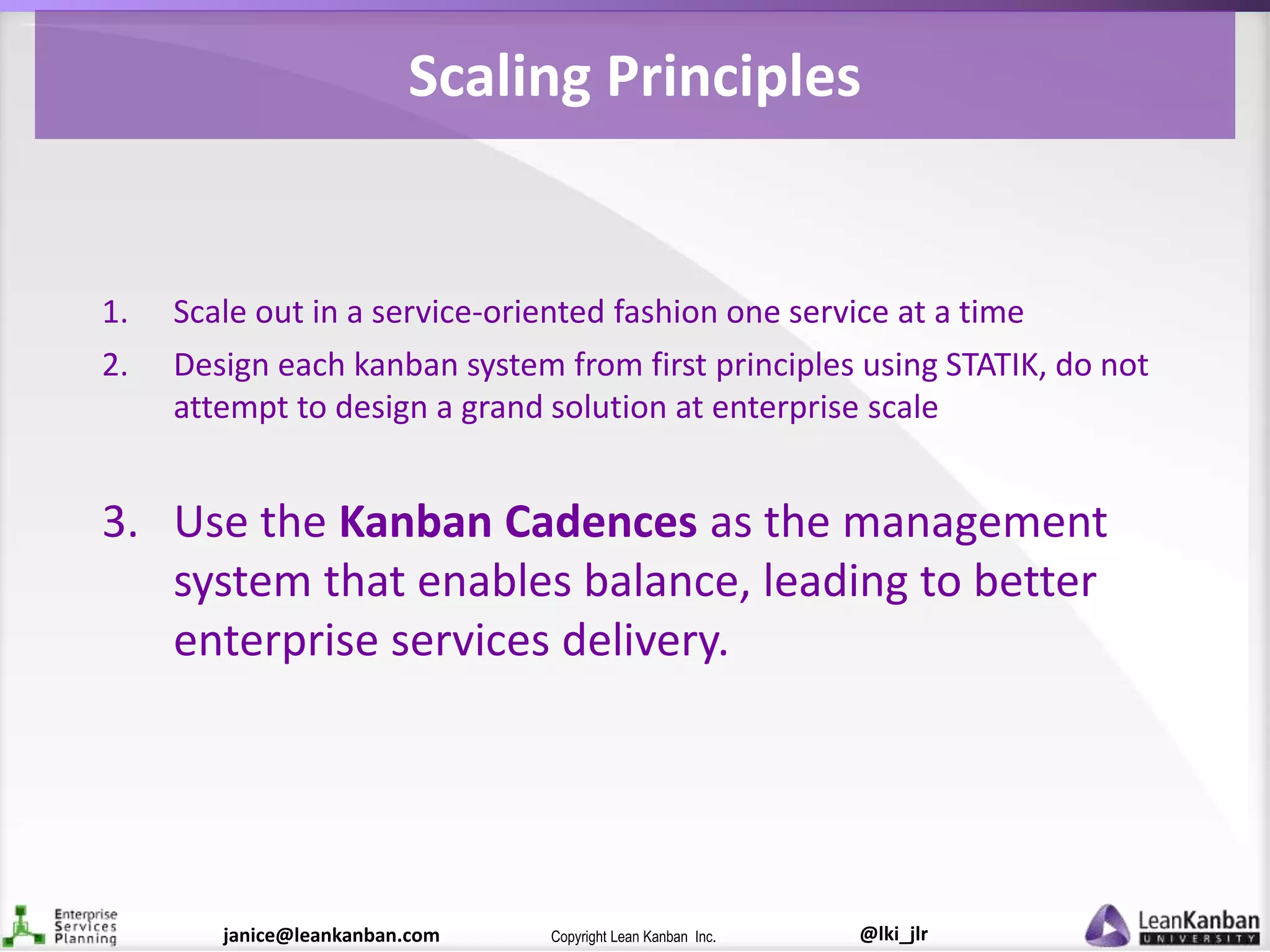



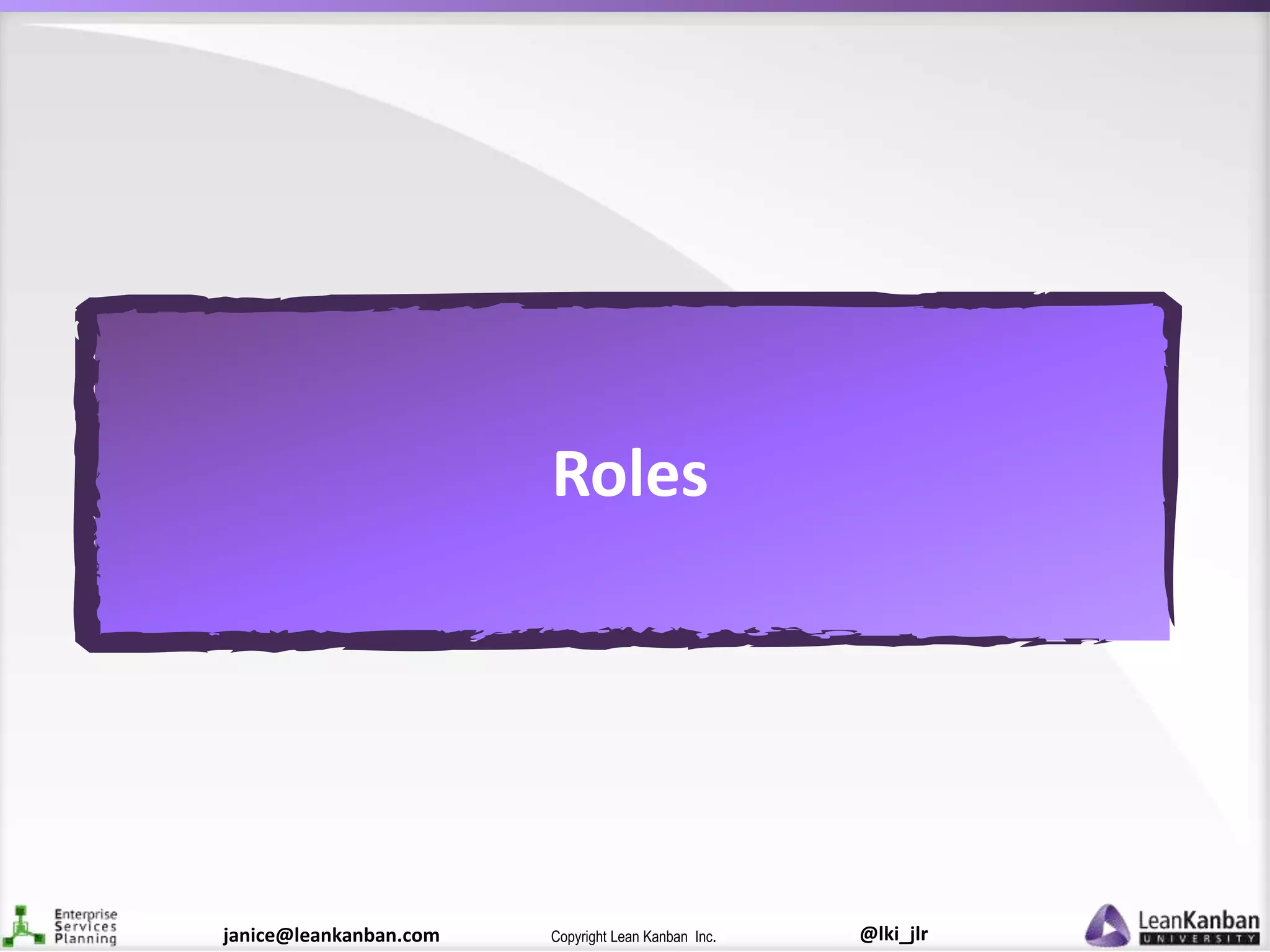

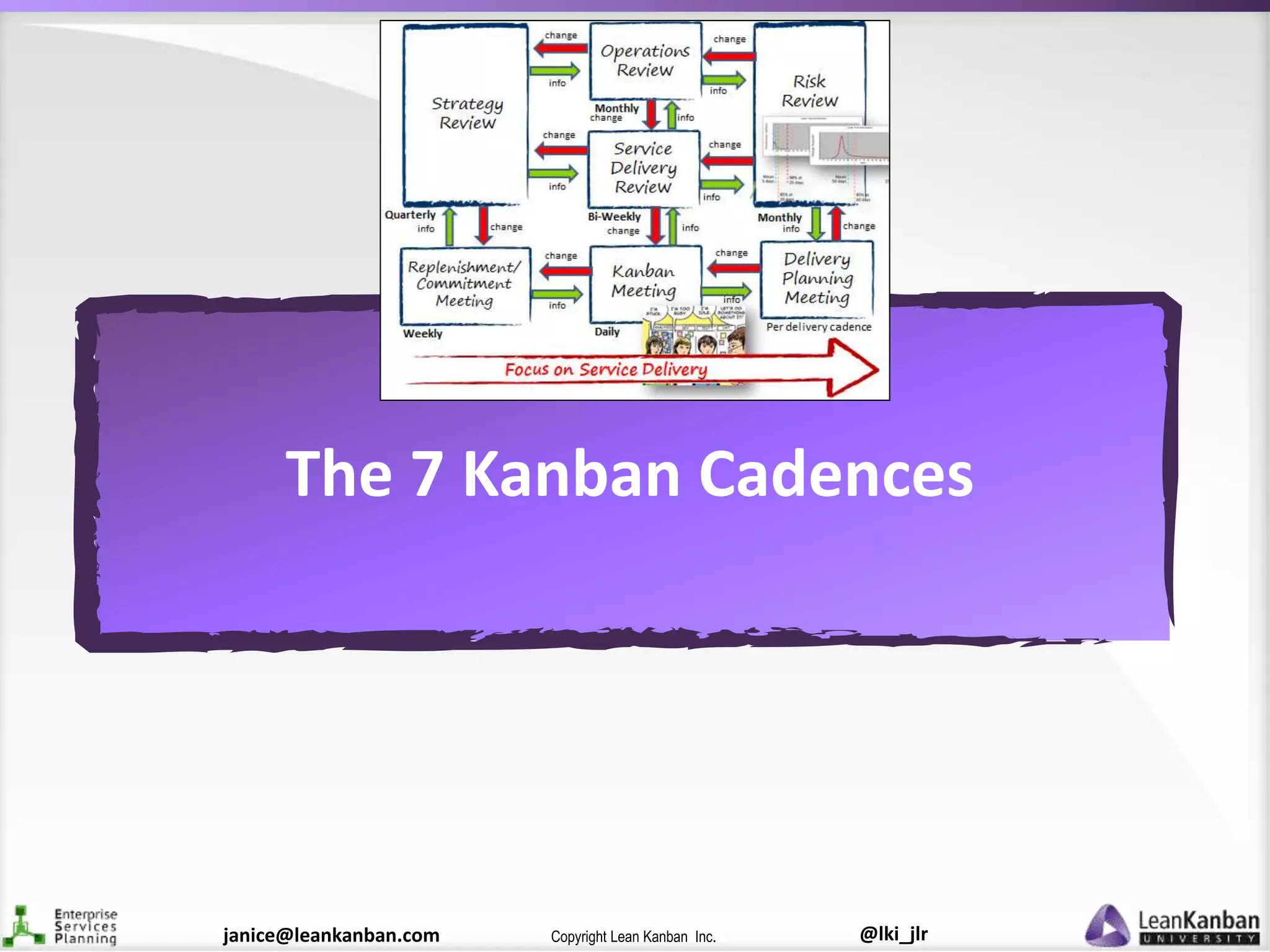


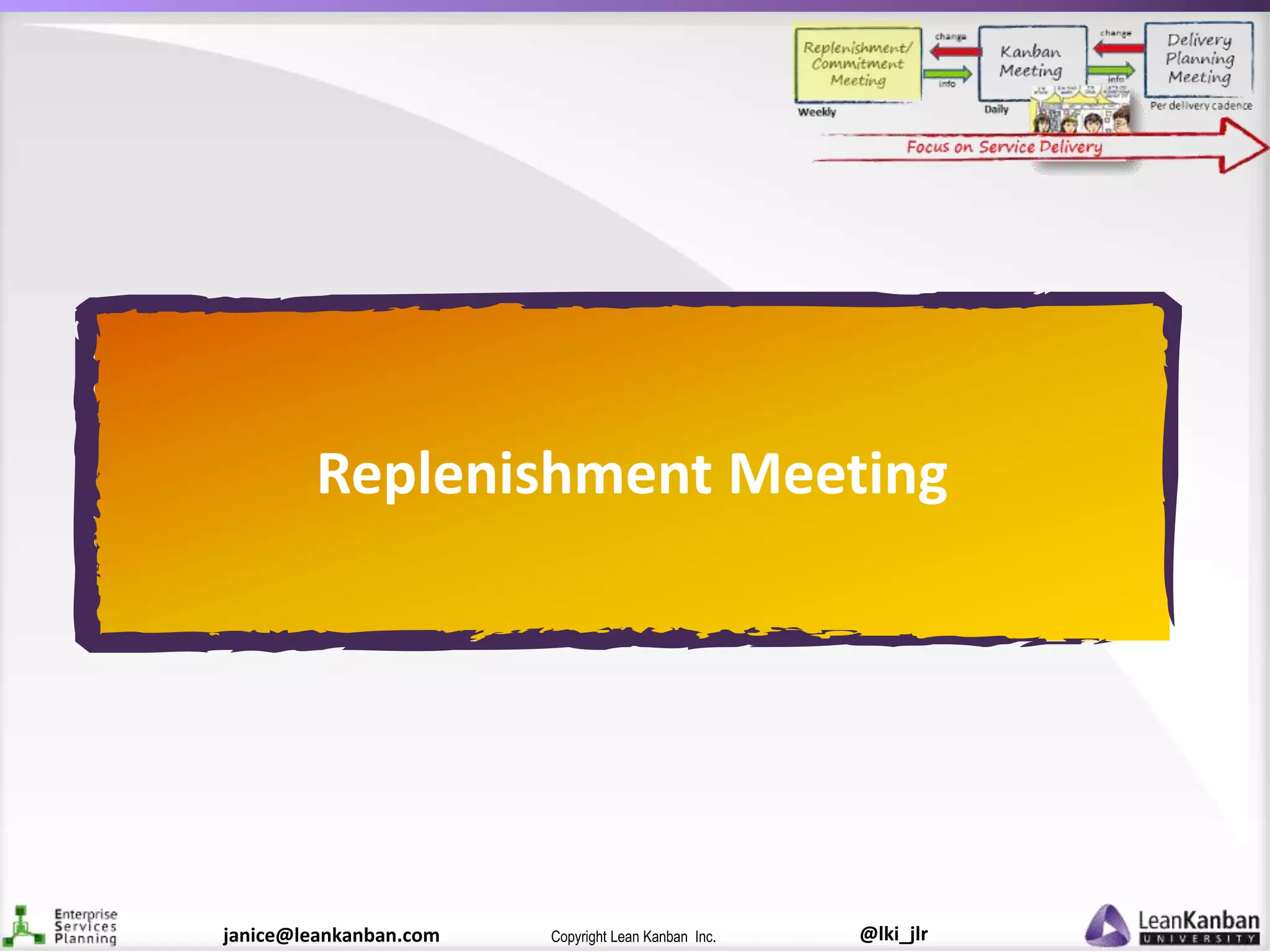



![@lki_jlrCopyright Lean Kanban Inc.janice@leankanban.com
[Daily] Kanban Meeting](https://image.slidesharecdn.com/kanbancadenceslkcejlr-151122120654-lva1-app6892/75/Kanban-Cadences-Information-Flow-23-2048.jpg)

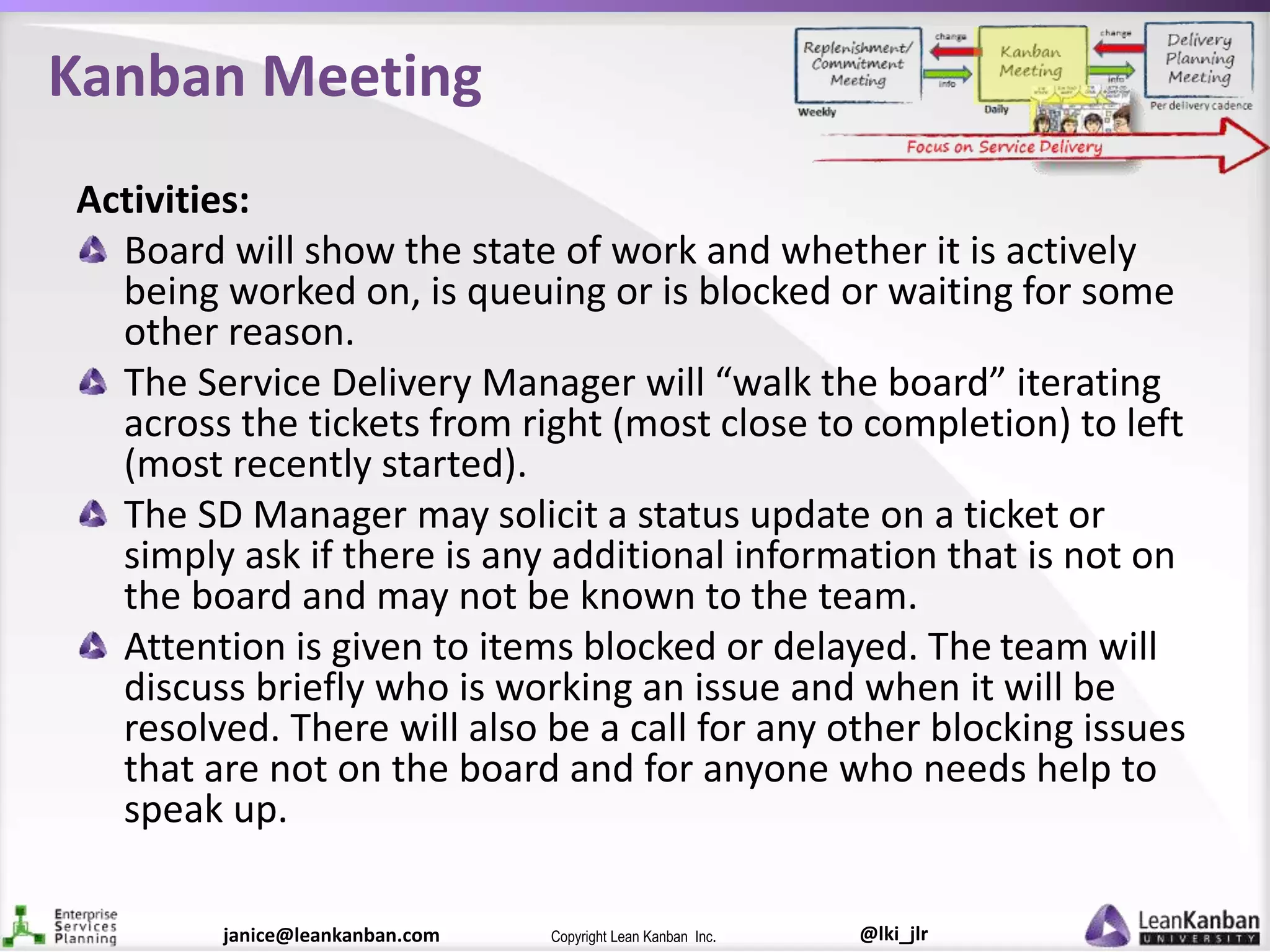
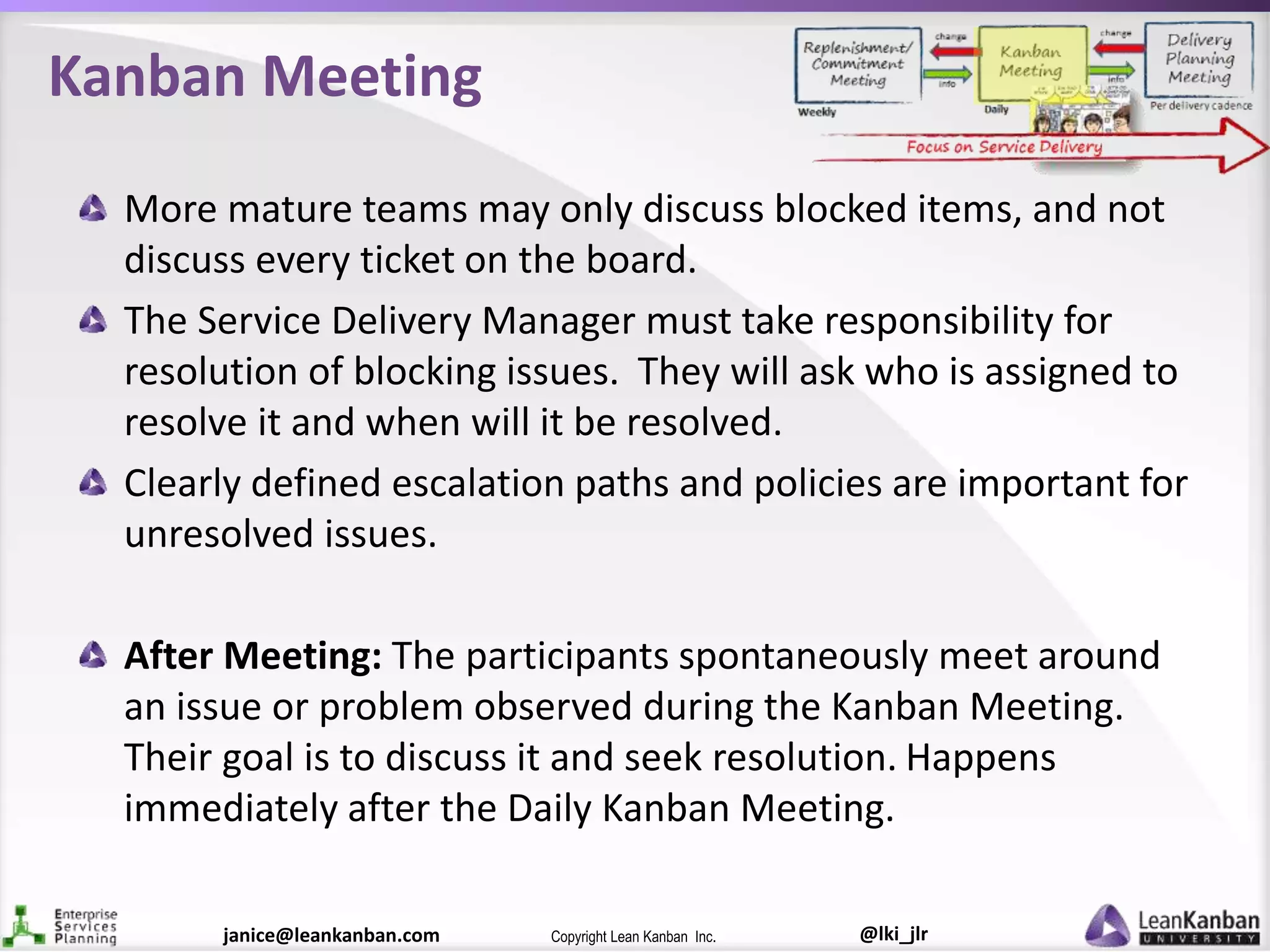




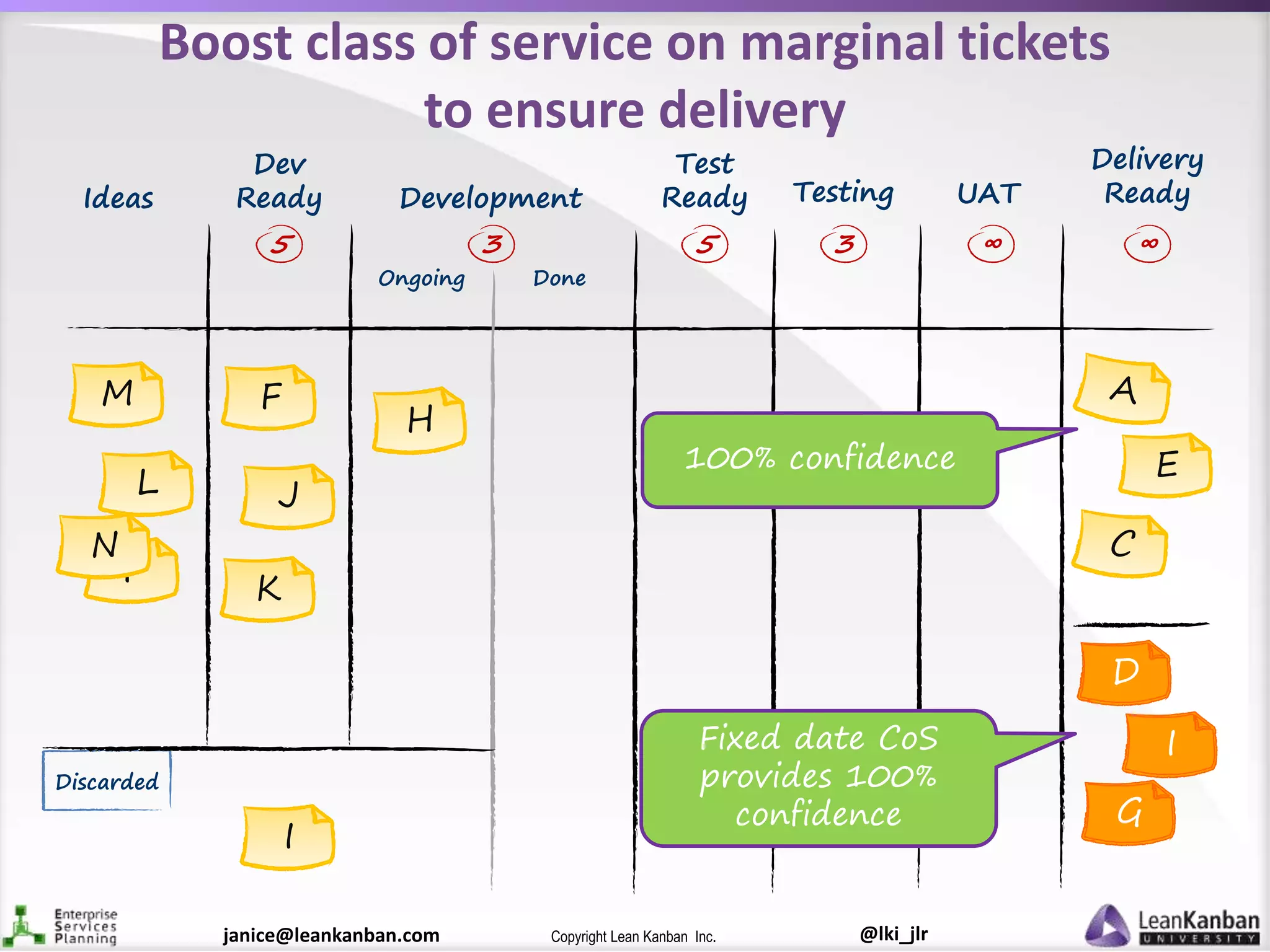
![@lki_jlrCopyright Lean Kanban Inc.janice@leankanban.com
Delivery Planning Daily Kanban Meeting
Ask “which items [from the Kanban board] do we believe will be
completed in time for delivery on [delivery date]?” This can be done using
Monte Carlo simulation built into high quality Kanban software tools, or it
can be done in a more qualitative manner by asking team members how
things are flowing.
In this situation, all items committed for delivery at Delivery Planning
effectively become fixed delivery date class of service items. Ideally this
should be made explicit and visualized appropriately.
As a consequence the queuing discipline on the kanban board is affected.
What and how workers at the kanban board choose pull items will be
changed for a temporary period until the delivery is made from the system
to the customer(s).](https://image.slidesharecdn.com/kanbancadenceslkcejlr-151122120654-lva1-app6892/75/Kanban-Cadences-Information-Flow-32-2048.jpg)









